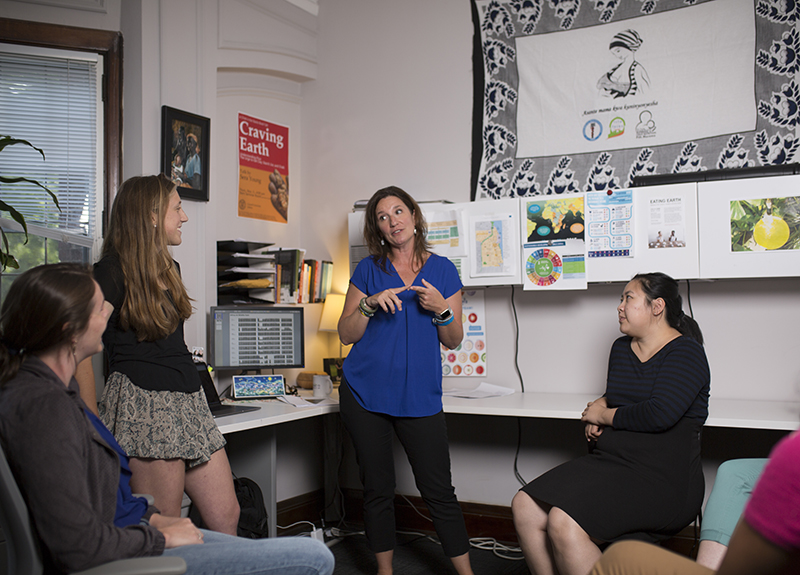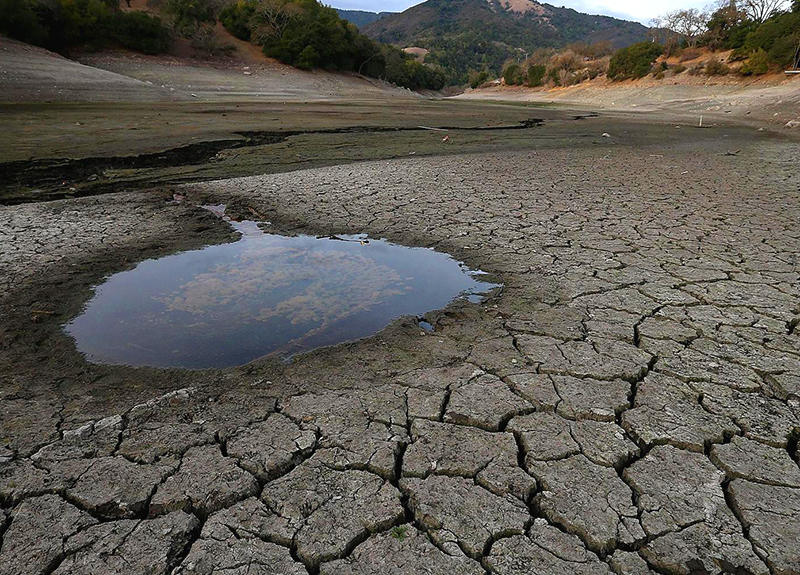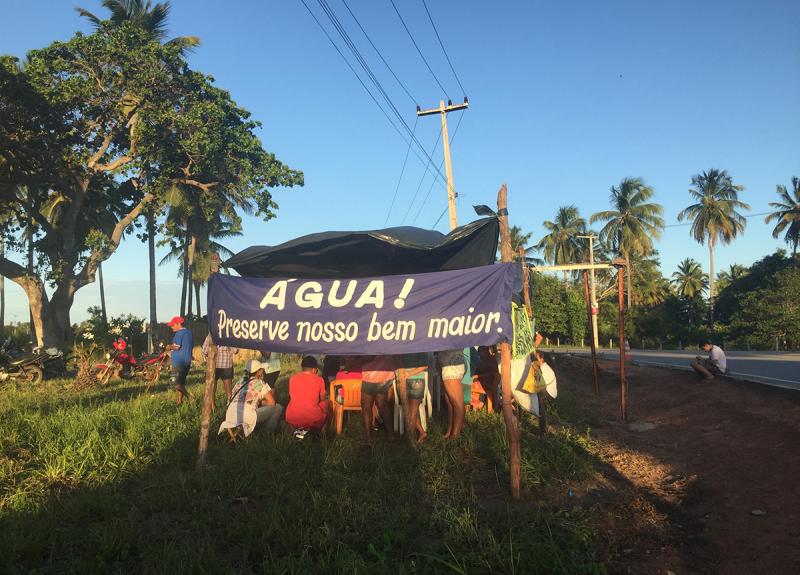Conversations with women worldwide drive anthropologist Sera Young’s research
By Clare Milliken // Originally published by Northwestern Now. The research mentioned herein is funded in part by the Institute for Sustainability and Energy at Nothwestern (ISEN).
“You’re the researcher. You tell us.”
Those few words set anthropology professor Sera Young on a course toward ending food and water insecurity worldwide.
While studying maternal anemia in Zanzibar in 2006, Young spoke with pregnant women to learn about their dietary habits. It was during these discussions that one woman, sitting on the floor of her home, removed a chunk of clay from the wall and ate it.
Young would learn that this was a relatively common behavior in Zanzibar: pregnant women craved clay, dirt, sand and other non-food substances, and they ate them, sometimes multiple times a day.
When Young asked people in the village why women were doing this, the wife of a traditional healer pushed Young to answer that question herself.
“She gave me my first job,” Young says of the healer’s wife.
Young spent years researching pica, a condition in which people crave and consume non-food substances. Pica, Young would find, is not relegated to pregnant women or developing countries — it’s much more widespread.
“In the U.S., you can buy clay online and have it delivered discreetly to your house,” Young says. “Graveyard dirt is used in certain voodoo potions. There’s a grotto in Bethlehem where supposedly a drop of the virgin Mary’s milk spilled, and some people believe that if you eat that earth, your milk supply will increase and your fertility will improve.”
Beyond the religious or superstitious, Young says eating clay might act as an anti-diarrheal, thereby preventing deaths from contaminated water or food.
Young went on to write a book about pica, called "Craving Earth," which won the 2013 Margaret Mead Award from the Society for Applied Anthropology and the American Anthropological Association.
Finding enough food
“This work led me to think about feeding problems more generally,” Young says. “Food insecurity is not about starving. It’s about not having enough to eat, or having to do dangerous things — transactional sex, for example — to get enough food.”
Women, and mothers in particular, are often responsible for making sure everyone is fed, Young says. “That’s kind of a hallmark of what moms around the world do. And when moms can’t do that, or when they’re consumed by thinking about how they’re going to feed their family, it really takes a toll on their physical and mental health and safety.”
Young specifically focused on food insecurity among Kenyan women in the first 1,000 days — the three months before a woman becomes pregnant, through her pregnancy and two years postpartum.
“The first two years of life set the trajectory of growth, intelligence, immune function,” Young says. “It’s a really critical window, and we can all agree that food insecurity is bad, but we’re still figuring out exactly how its effects manifest.”
Young is reluctant to offer broad-based solutions for food insecurity. She believes any effective solutions must be context-dependent — the solution to food insecurity in the U.S. is not necessarily the same as food insecurity in Pakistan. And Young is also quick to point out that food insecurity is not the same as poverty.
“Households may prioritize buying food when they’re very poor and only spend their money on food, or they may prioritize school fees, thereby reducing food access,” she says.
A scale for water scarcity
As part of her research on food insecurity in Kenya, Young gave women cameras and asked them to take pictures of things that influence how they feed their children. Within days, Young was inundated with pictures of water.
“I thought ‘Huh? Water? No, we’re talking about food here,’” Young says. “But pretty soon I realized the obvious: Water is fundamental. Water insecurity precedes food insecurity.”
When Young sought to understand the scope of water insecurity, the words of the Zanzibari healer’s wife replayed in her head: “You tell us.”
“There was no scale to measure water insecurity in Kenya,” Young said. “There was one for Ethiopia; there was one for Bolivia; and one for the Texas-Mexico border. But I couldn’t just pick them up and use them, because the questions didn’t always apply across cultures.”
After creating and publishing a water scarcity scale for Kenya, Young set out to create a cross-culturally valid measure of water insecurity — a scale that was basic yet comprehensive — to measure water insecurity anywhere from Caracas to Calcutta.
Young’s research team began with six research sites — diverse locations around the world— and that number organically grew to 28 sites.
“This project snowballed quickly,” Young says. “People would say, ‘Oh, you’re measuring water insecurity — that makes so much sense. We can include your measurements in our ongoing study.’”
Young is now leading a multi-disciplinary and international team, including geographers, physicians, statisticians and others.
“It really is a beautiful academic endeavor,” Young says. “We’re working with people of all different religions, sexualities, et cetera. In a recent meeting, we were sitting around the table with people from five continents. This project is a beautiful example of coming together for a common cause.”
Young and her team are now finalizing a universally applicable water insecurity scale, based on data from those 28 sites. The Household Water Insecurity Experiences (HWISE) Scale has just over 10 questions, including “How often have you worried about having enough water?” and “In the last month, how often have you gone to bed thirsty?”
“This is a really big deal,” Young says. “UNESCO is paying attention. USAID and Oxfam are paying attention. Now that we can measure household water insecurity, a whole new field of study becomes possible.”






